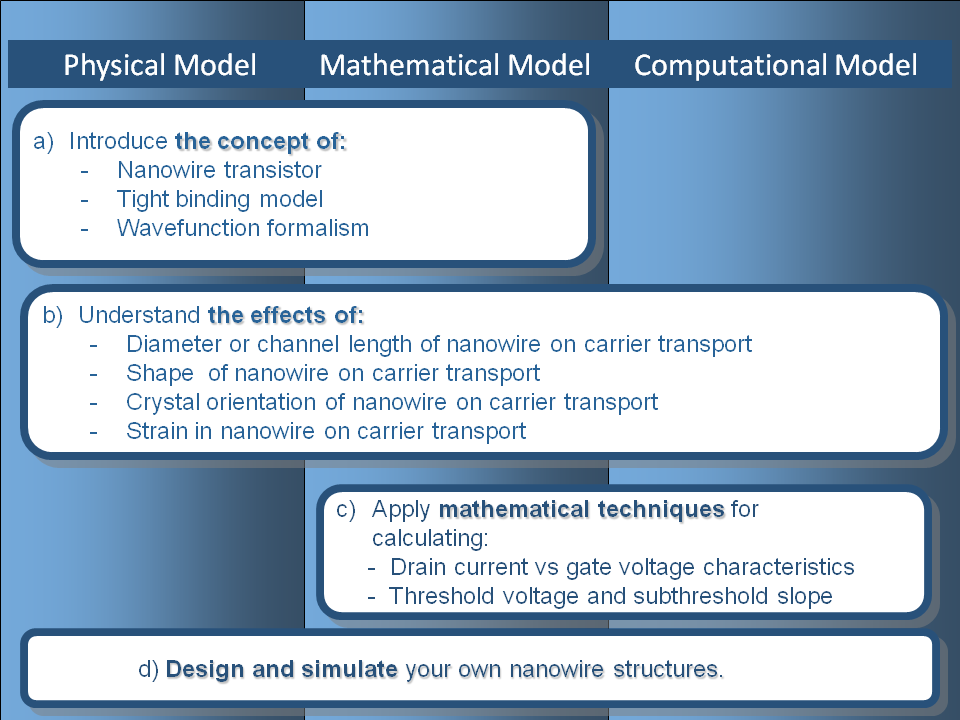By completing the OMEN Nanowire Lab, users will be able to understand a) the operation of nanowire FETs, b) the effect of bandstructure on the carrier transport in nanowire FETs, and c) the effect of geometry of nanowire on the drain current characteristics in nanowire FETs
The specific objectives of the OMEN Nanowire Lab are:
Recommended Reading
Users who are new to the concept of nanowire FETs and the simulation methods that are useful for understanding their characteristics should consult the following resources:
- Mark Lundstrom, Nanoscale Transistors for a basic understanding on MOS transistors.
- Joerg Appenzeller, What Promises do Nanotubes and Nanowires Hold for Future Nanoelectronics Applications?
- Timothy Sands, Nanotubes and Nanowires: One-dimensional Materials
- Monica Taba, Investigation of the Electrical Characteristics of Triple-Gate FinFETs and Silicon-Nanowire FETs
- Mark Lundstrom and Jing Guo. (2009). Nanoscale Transistors: Device Physics, Modeling and Simulation. New York: Springer. (See especially chapter 5)
- Saumitra R. Mehrotra, et al., Threshold voltage
- Mark Lundstrom, Subthreshold conduction
Demo
- OMEN Nanowire: Video Demo
- OMEN Nanowire: First Time User Guide
- Supporting Document – Limitation of the Tool at Large Gate Voltage
Theoretical Descriptions
- Mathieu Luisier, et al., Atomistic simulation of nanowires in the sp3d5s* tight-binding formalism: From boundary conditions to strain calculations, Physical Review B 74, 205323, 2006
- Mathieu Luisier, Quantum transport beyond the effective mass approximation, ph.D. thesis, ETH, 2007
- Mathieu Luisier, Quantum Transport for Nanostructures
- Dragica Vasileska, et al., Tight-Binding Bandstructure Calculation Method
Tool Verification
Examples
Homework
Solutions to Exercises
- Solutions to exercises are provided only to instructors!
Evaluation
Challenge
Users are challenged to integrate what they have learned about OMEN Nanowire Lab in the following module:
